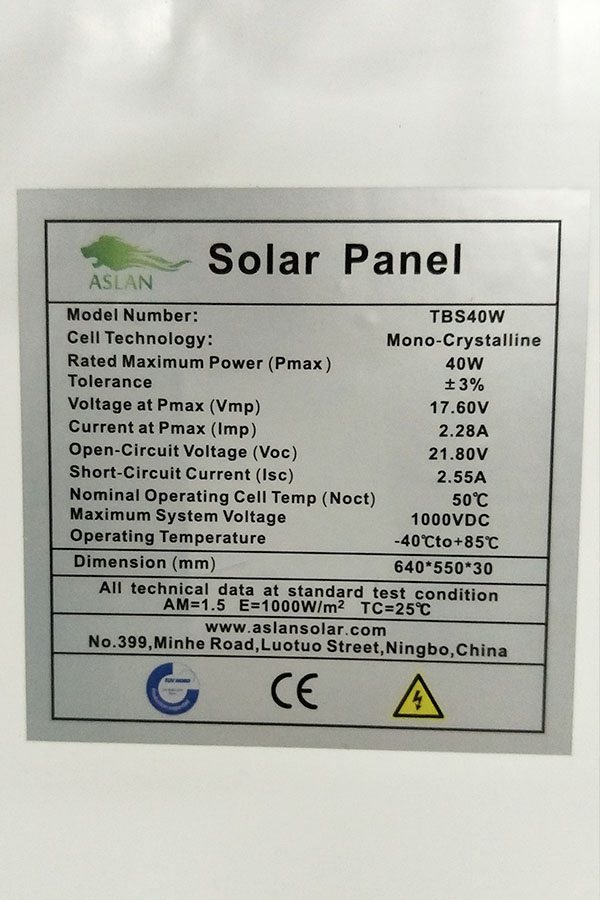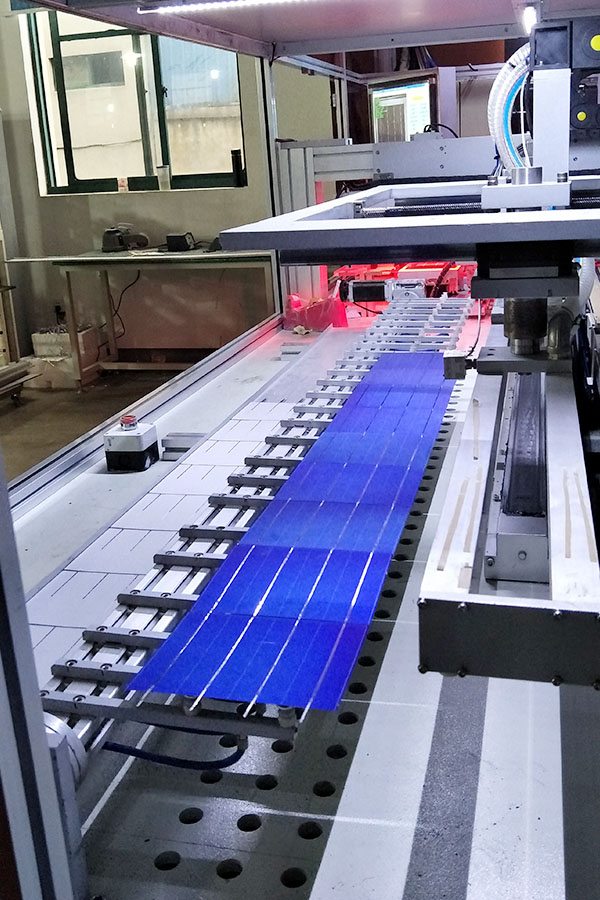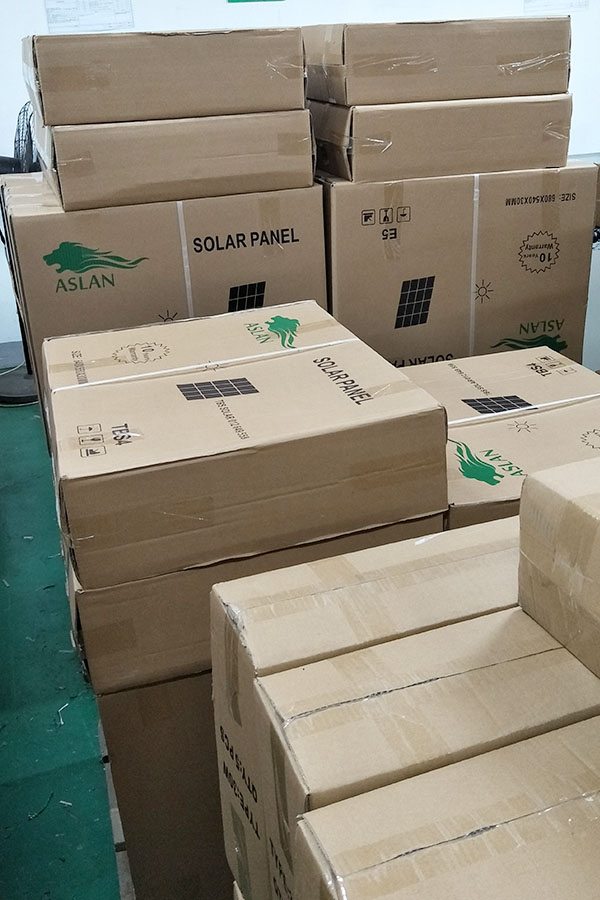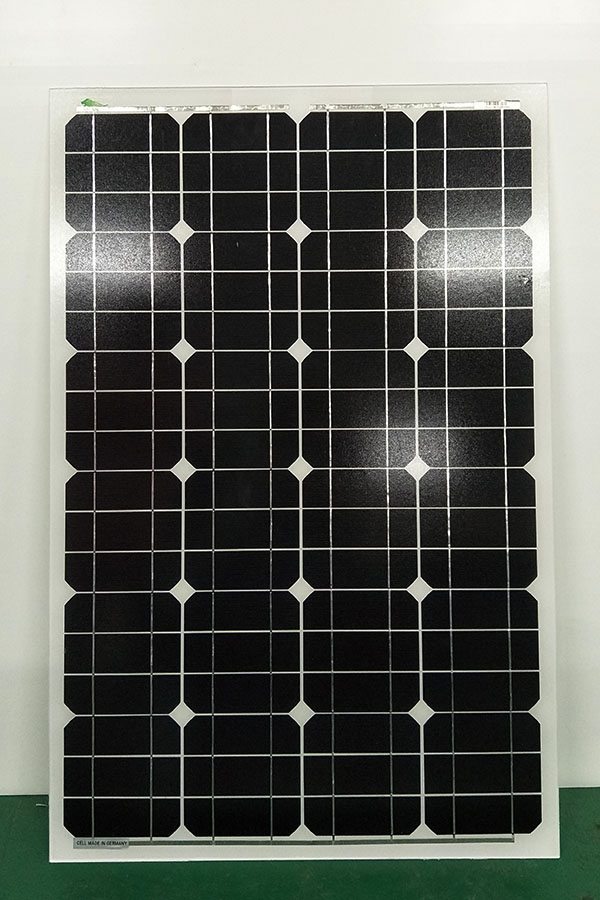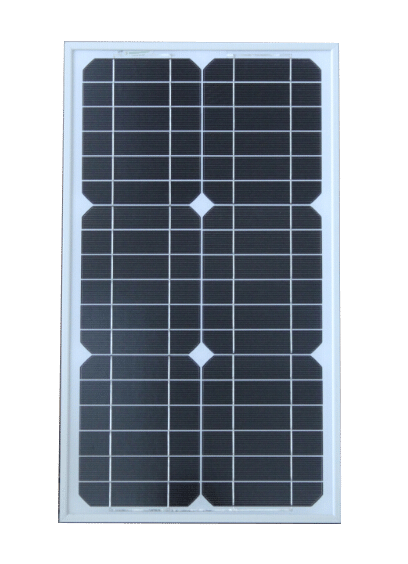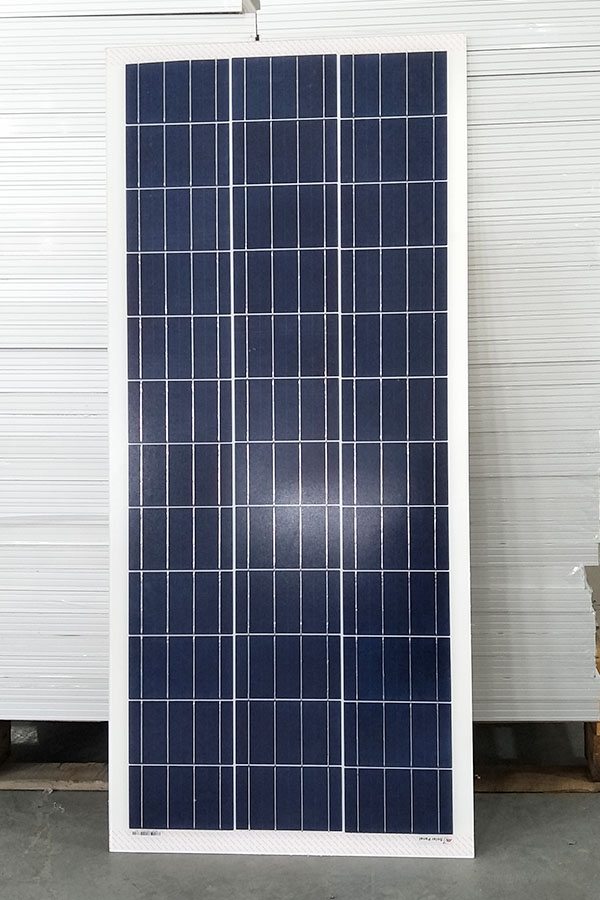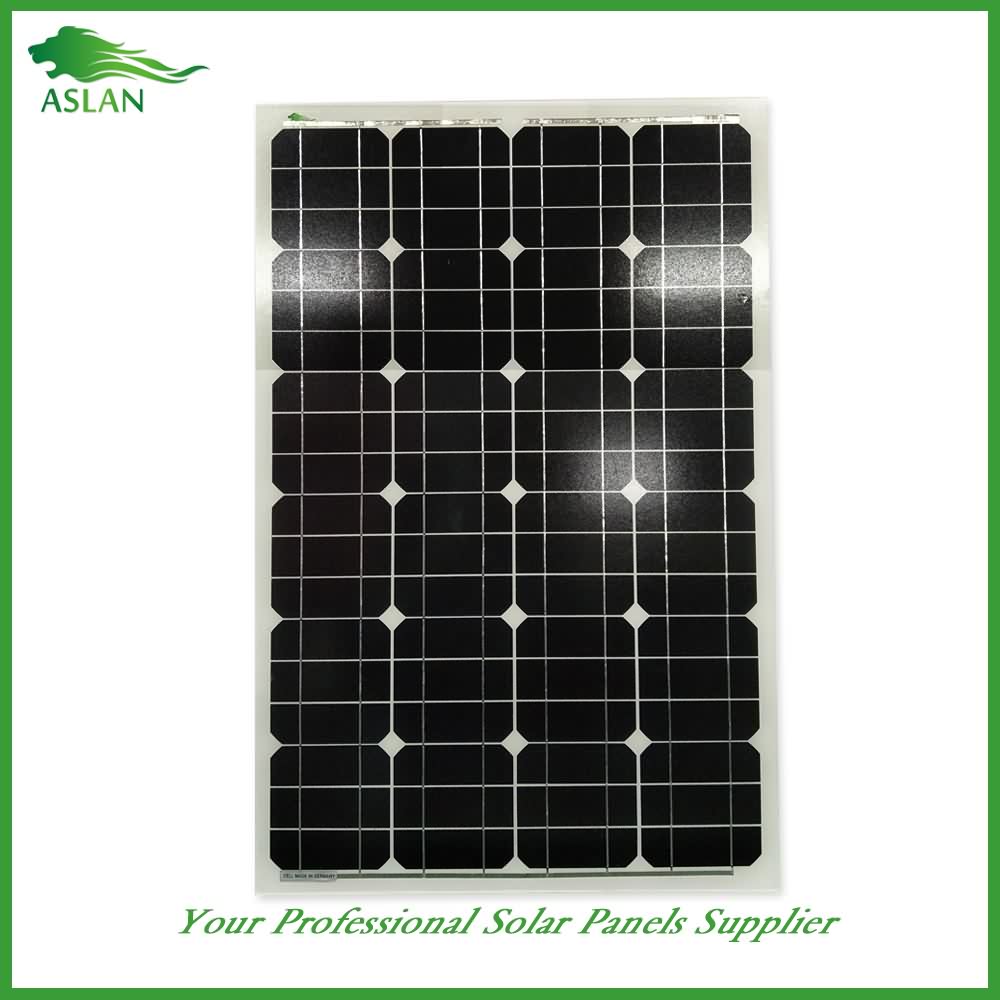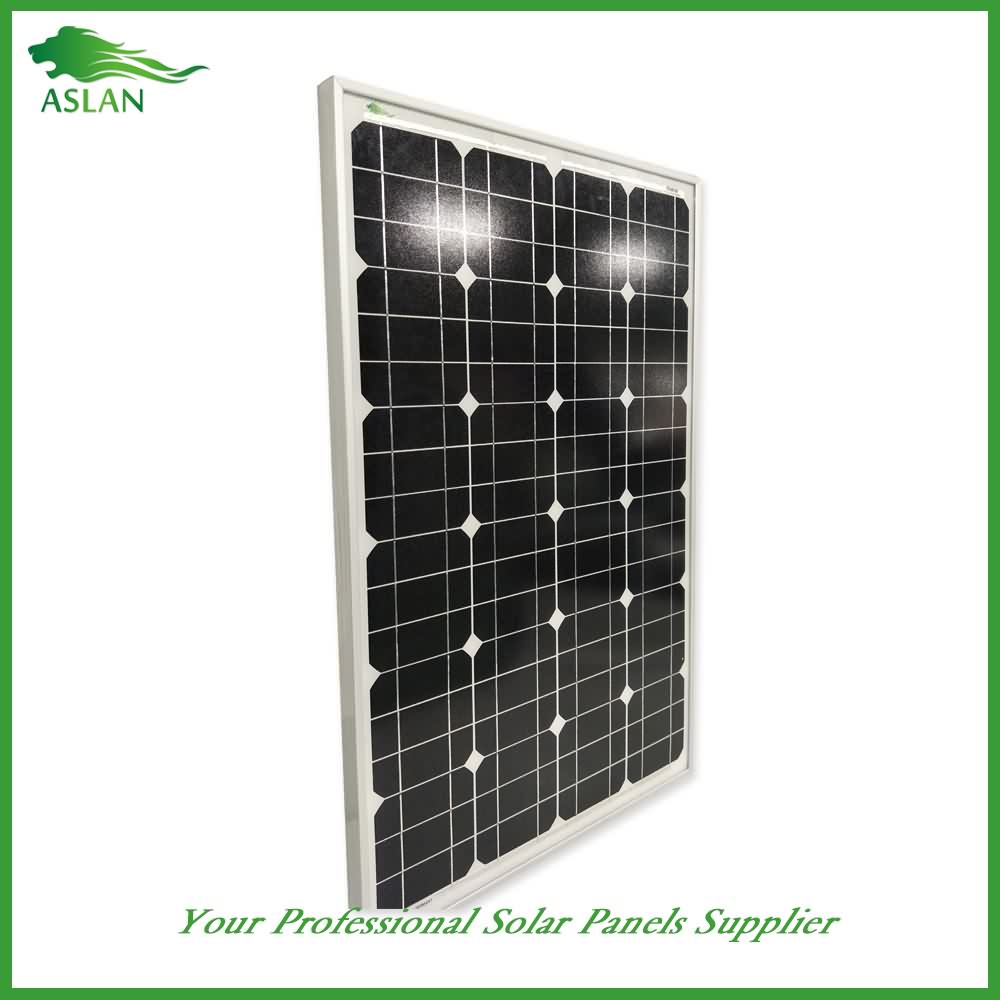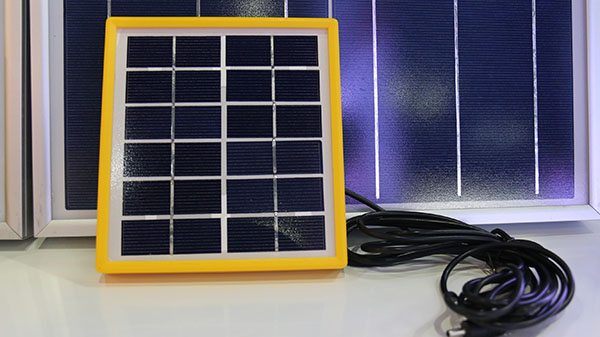New Fashion Design for Poly-crystalline Solar Panel 80W Norwegian Factory
Short Description:
The key to our success is "Good Product Quality, Reasonable Price and Efficient Service" for New Fashion Design for Poly-crystalline Solar Panel 80W Norwegian Factory, Welcome to visit us at any time for business relationship established.
Poly-crystalline Solar Panel 80W
Technical parameter
Maximum Power(W) 80W
Optimum Power Voltage(Vmp) 18.13V
Optimum Operating Current(Imp) 4.70A
Open Circuit Voltage(Voc) 21.79V
Short Circuit Current(Isc) 5.16A
Mechanical Characteristics
Cell Type Poly-crystalline 156x104mm (6 inch)
No of Cell 36 (4x9pcs)
Dimensions 1008x678x35mm
Weight 8.3KGS
Front Glass 3.2mm,High Transmission, Low Iron,Tempered Glass
Junction box IP65 Rated
Output Cable TUV 1×4.0mm2/UL12AWG,Length:900mm
Temperature and Coefficients
Operating Temperature(°C): -40°C ~ + 85°C
Maximum System Voltage: 600V(UL)/1000V(IEC) DC
Maximum Rated Current Series: 15A
Temperature Coefficients of Pmax: -0.435%
Temperature Coefficients of Voc: -0.35%
Temperature Coefficients of Isc: 0.043%
Nominal Operationg Cell Temperature (NOCT): 47+/-2°C
Materials of solar panel
1).Solar Cell——Poly-crystalline solar cell 156*104mm
2).Front Glass——-3.2mm, high transmission, low iron, tempered glass
3).EVA——-excellent anti-aging EVA
4).TPT——-TPT hot seal made of flame resistance
5).Frame——anodized aluminum profile
6).Junction Box——-IP65 rated, high quality, with diode protection
Superiority: high quality anodized aluminum frame, high efficiency long life, easy installation, strong wind resistance, strong hail resistance.
Features
1. High cell efficiency with quality silicon materials for long term output stability
2. Strictly quality control ensure the stability and reliability, totally 23 QC procedures
3. High transmittance low iron tempered glass with enhanced stiffness and impact resistance
4. Both Poly-crystalline and Mono-crystalline
5. Excellent performance in harsh weather
6. Outstanding electrical performance under high temperature and low irradiance
Quality assurance testing
Thermal cycling test
Thermal shock test
Thermal/Freezing and high humidity cycling test
Electrical isolation test
Hail impact test
Mechanical, wind and twist loading test
Salt mist test
Light and water-exposure test
Moist carbon dioxide/sulphur dioxide
Learn More About Solar Panels and Solar Power at http://solarpanelsvenue.com/types-of-solar-panels-most-used-pv-solar-panels/?utm_source=youtube&utm_medium=video&utm_campaign=solarpanelsforbeginners
Download Your Free book ““Solar Power Demystified: The Beginners Guide To Solar Power, Energy Independence And Lower Bills” here:
http://solarpanelsvenue.com/solar-power-demystified-free-book/?utm_source=youtube&utm_medium=organicvideo&&utm_campaign=youtube
Solar Panels for Beginners: Solar Panels How They Work
This video will show: what solar panel is, differences between main types of solar panels, which type of solar panel is the most efficient one, what affects the energy output of a solar module.
Photovoltaic module is the main component of any solar electric system. A solar module consists of photovoltaic cells connected together. Photovoltaic cells and modules are made of semiconductor, usually silicon, which capable to produce electricity when exposed to sunlight. Such ability is called a ‘photovoltaic effect’. Photovoltaic modules generate DC electricity. They are produced in various type and size. They have a lifetime of more than 25 years.
Solar module is the main unit of any solar power system. A solar module consists of solar cells connected together. To achieve higher energy yield, solar modules are connected in arrays. Here you see the main types of photovoltaic units.
A solar power system is the ultimate point of solar module application. It contains an installed solar array generating electricity from sunlight. A solar electric system can replace partially or completely your electricity provider thus saving you money. A solar power system can be connected to or disconnected from utility grid. The generated electricity can be either used right away or stored in a battery for later use.
Solar panels consist of photovoltaic cells connected in series and in parallel.
PV modules differ mostly in their: type – they can be monocrystalline, polycrystalline and thin-film. They differ in their power output, also known as ‘power rating’ or ‘rated power’. ,
There are 3 main types of solar panels: monocrystalline, polycrystalline, and thin-film ones. We’ll briefly give some info about each type.
Monocrystalline solar panels are the most efficient but also the most expensive ones. They come in a blue or black color. You would probably ask what efficiency of a solar module is. Well, the less photovoltaic modules you need to produce a certain amount of power, the higher their efficiency. // Normally if there is not enough free space on your roof, you choose solar modules with higher efficiency.
Polycrystalline solar panels are slightly less efficient and cost 30 to 50 percent less than monocrystalline ones, when used to produce the same amount of power.
Polycrystalline modules have a lifecycle of about 25 years. Practice has shown however that polycrystalline modules installed more than 25 years ago are still perfectly operational. Polycrystalline modules are typically blue and can be easily distinguished by their multifaceted, kind-of-shimmering appearance.
Thin-film solar panels are the least expensive modules with the lowest efficiency. The efficiency of thin-film modules is twice less than the efficiency of monocrystalline modules. This means that if you want to generate the same amount of power produced by monocrystalline modules, you need twice more thin-film modules. Thin-film modules have a dark surface – usually colored in brown, grey and black.
It’s important to precisely compare the three main types of solar modules by their efficiency. Monocrystalline and polycrystalline modules are the most commonly used ones in home and business solar electric systems. The table presents the area needed by every module type to produce 1 kilowatt of power. You can see that monocrystalline modules require the smallest area, as they are the most efficient ones. Thin-film modules require the largest area to install, and for this reason they are the least efficient ones.
The energy output of a solar module is affected by three factors: Location, Orientation and tilt angle, and Shading.
Geographic location plays a vital part in the energy output of any solar module since it determines the amount of solar radiation affecting directly the generated solar power.
Orientation is the most important for energy output of a solar module. Optimal orientation might be different for summer and winter. It should be noted that azimuth is much more critical than tilt angle. Certainly the best performance is achieved when a solar panel faces the sun.
The third important factor, critical for every solar module’s energy output, is shading. Shading is always detrimental for system performance. It should be noted that thin-film modules are less affected by shading.
Additional info:
http://solarpanelsvenue.com
https://en.wikipedia.org/wiki/Solar_panel
kolnwindandsolar@gmail.com


